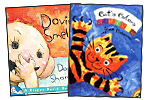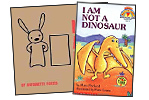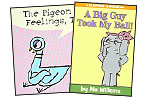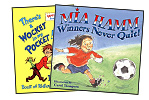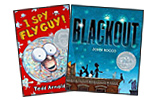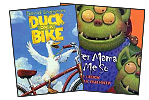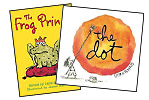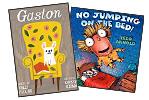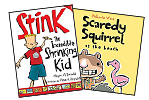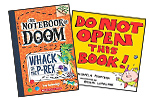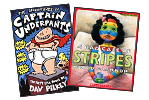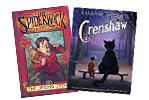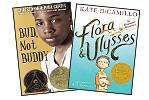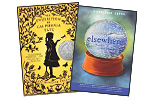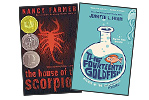
Best Books by DRA Level
Below are the best children's books, organized by DRA Level. We've scoured the bookstore shelves, talked to teachers, read a lot of online reviews, even surveyed children...and in the end we've come up with the best children's books for each levels.
We'll keep adding to these lists as new discoveries are made (and please recommend any we missed.) In the meantime, we sincerely hope these lists will be a
helpful resource for teachers in need of guided reading books or for
parents looking for books for their own children to read.
What are "DRA Levels"? An explanation for parents:
To break the daunting task of learning to read into
smaller, developmental steps, school use leveling systems to describe
where children are at on the reading spectrum and what books are most
appropriate for each step in the process. One of the most popular
systems of leveling is "Developmental Reading Assessment" system, commonly known as "DRA."
If your child's school uses this system, here's how it works: Your child's teacher will regularly read with your child to determine three important components of literacy:
- accuracy -- how many words they can read correctly
(The ideal range is 90-95% of words read correctly. If a child reads more than 95 out of every 100 words correctly, the book may be too easy and the child may be ready to move up to the next level (assuming they do well on fluency and comprehension). Conversely, if the child reads less than 90 out of every 100 words correctly, the book may be too difficult. Teachers call this "frustration level", for obvious reasons.) - fluency -- how many words they read per minute
(The ideal range varies by reading level. Note: This is less important at the early stages (A-E). In fact, many districts do not consider reading speed/fluency until level F. - comprehension -- do they understand what they have just read
(The depth of understanding required varies according to reading level -- from simply recalling the facts of the story in the lower levels to more in-depth discussions / insights at the upper levels)
Once the 'test' is given, the teacher will then use the above criteria to determine which of the DRA Levels best fits your child's current reading ability. The levels range from 2-70, with children generally starting at 2 in Kindergarten and, ideally, progressing through the levels of the alphabet to level 70 by middle school.
How often these test are given varies per child.
Once a month is a good range, but children who seem to be ready are
often tested earlier so that they don't stay on one level if they are
ready for a more challenging one. And sometimes, with holidays and
events and how busy a classroom can get, tests can be given at intervals
longer than a month. So...it varies. Sorry we can't be more specific
than that. :)
Then, in addition to determining children's reading levels, books are leveled as well.
There are many, many factors that go into how books are leveled. The
important thing to know is that the reading level for many popular
children's books have been determined, using the same DRA
Levels system
The result of all this leveling is that children can be given books that exactly match their current reading ability. This is crucial to reading success!!!
- If
books are too hard, kids can easily get frustrated and confused. Text
structures might be too complex. Unfamiliar types of spelling patterns,
punctuation, or words can cause children to question what they already
"know". Comprehension definitely suffers.
- If books are too
easy, the lack of challenge and interest often means kids don't make
the progress they should...and they can eventually find reading boring.
Children who read books that 'fit' their current DRA level (teachers call these "good fit books") make much greater improvements in reading ability and reading enjoyment! Daily reading of on-level books is crucial for reading success!
Hopefully this brief explanation has been more helpful than confusing. One last note: We encourage parents to keep in mind that learning to read is a long process that can include leaps and bounds at one point and slow and steady progress at other points. Progress is what we are all shooting for, and half the battle with reading is whether the student thinks he or she is successful at reading. Keeping a positive, encouraging, and upbeat tone is truly an important part of a child's literacy success. :)
